These prospective teachers could fill a critical shortage, but they're worried
Future educators shared their excitement and the challenges ahead.
Luz Andrade has been eagerly waiting for a teaching job offer for weeks -- she is ready to get to work.
The 2022 Virginia Teacher of Promise honoree, recognized as one of the best prospective instructors from colleges and universities across the state, is determined to teach in the Washington area where she grew up. But Andrade shed a few tears when she heard the news about the Robb Elementary School massacre that killed 19 students and two teachers in Uvalde, Texas, in May.
"I started thinking about: What if it does happen while I'm a teacher at the school that I'm at?" Andrade told ABC News. "It does make me think about if I need to buy my own resources to make sure that my students are safe, that I'm safe as well."
Amid a teacher shortage, the near-term future of the profession could lie in the hands of recent graduates like Andrade and other aspiring educators, as well as classroom veterans who must overcome what they describe as rampant "burnout" and other challenges, including a years-long pandemic.
According to a January survey by the National Education Association, more than 50% of its members have indicated they would leave the profession "sooner than planned" due to job-related stress. Eighty-six percent of those surveyed by the NEA said they saw more staffers quit or retire since the onset of COVID-19.
There is also a lack of prospective teachers: American Association of Colleges for Teacher Education (AACTE) President & CEO Dr. Lynn M. Gangone said that many job seekers do not view the female-dominated profession in a positive light because of its representations in the media.
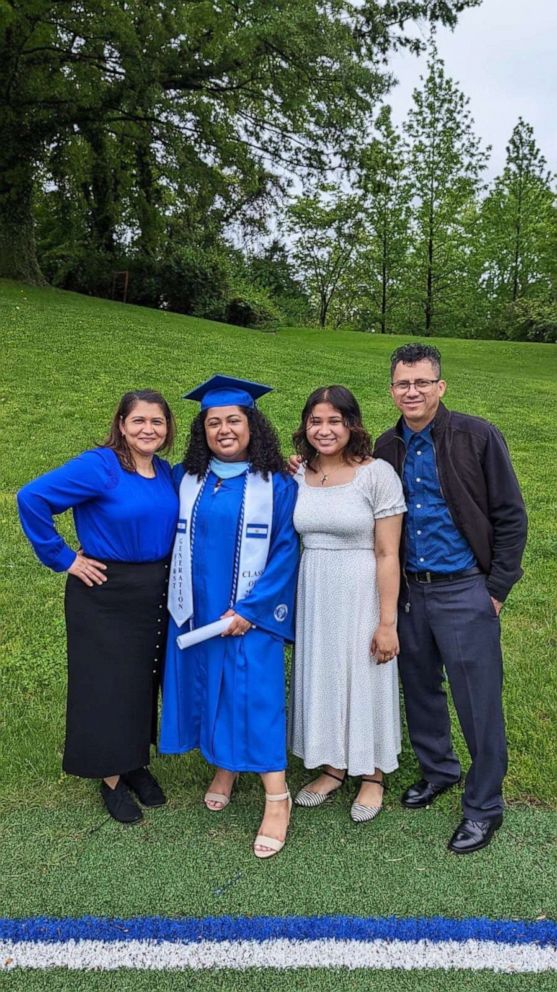
"What we've seen during the declining years of education major enrollment is that many women are choosing other careers," Gangone told ABC News. "That's part of the decline that has exacerbated it [the shortage] as well, as I think that we have a very negative perception of teachers and teaching."
As the University of California at Los Angeles' Cooperative Institutional Research Program found, only 4.3% of college freshmen intended to major in education in 2018, compared to 11% in 2000.
Not only did the number of intended majors decrease over the years, but the number of graduates did, too. A 2022 AACTE report on teacher preparation found that the number of education degrees declined by about 22% from 2005-2006 to 2018-2019 -- while the overall number of bachelor's degrees increased by almost 30%.
In both fall 2020 and fall 2021, 20% of its member institutions reported that the pandemic resulted in a decline in new undergraduate enrollment of 11% or more, a separate AACTE survey said.
Against the backdrop of the declining percentage of educators, Andrade is on edge about entering the workforce and so are others who spoke to ABC News about starting their first jobs in the field.
Social media posts about teaching during the pandemic continue to flood Andrade's timeline, so she has increased worries about going to school next year. Even though the Uvalde shooting was heartbreaking for her, Andrade said she will work to ensure her future students are protected by keeping the doors locked and finding them hiding spots that are away from windows. But that fear of gun violence is just one of Andrade's teaching concerns.
"I never really got the experience of being in the classroom until last year, fall of 2021, because of COVID," she said. "It was like: Do I really want to do this?"
The need for public school teachers
Teacher attrition was exacerbated by COVID. Schools faced many unforeseen obstacles when educators were sick and quarantining, and districts struggled with hiring substitutes and chronic student absenteeism. Andrade said some of the staff members at Wheatley Education in D.C., where she was a student special-education teacher from 2020 to 2022, left during the "middle of the year" and there were stretches when teachers were absent.
"Everyone was hands-on," Andrade said. "I can imagine how teachers can become easily burnt out, especially with COVID, because teachers were missing."
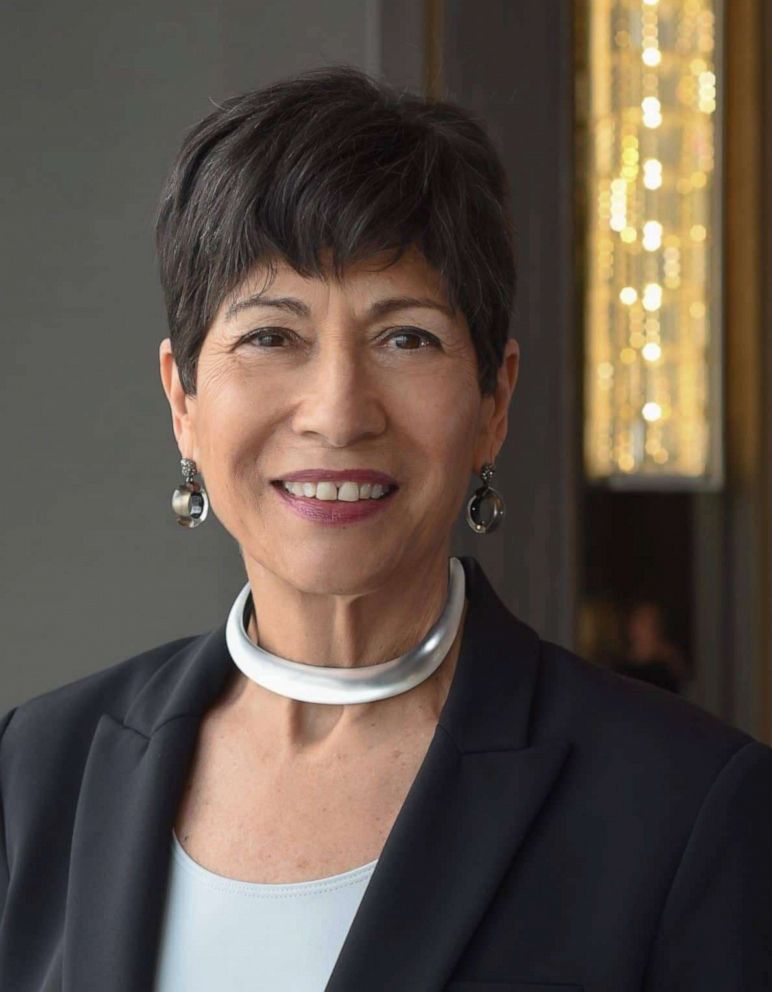
The District of Columbia's Public Schools system said increasing the pool of substitute teachers has been "part of the struggle" that has impacted school districts across the country, and Wheatley's shortages are indicative of the "whole district." A federal Government Accountability Office report on pandemic learning also estimated 233,000 fewer public school teachers in 2021 compared to the last year before the pandemic.
The teacher strain report draws from recent surveys of educators.
The shortages and national reports on stress levels has made Andrade "extremely nervous" about teaching in the fall, she said, but her student teaching experience has also encouraged her because it gave her a chance to give back to students from her community.
Increasing educator diversity
Education has always been important for Andrade, a first-generation high school and college graduate whose parents hail from El Salvador. She learned English growing up in DCPS, where students of color makeup at least 80% of the population, according to the district's enrollment numbers. As she has interviewed for teaching jobs in the metropolitan area, Andrade has been hoping to become an educator in DCPS, where she can reach minority students just like she used to be.
"Diversity is important," she said. "I think it's important for them to see that their teachers are also teachers of color because it helps them feel represented, especially with experiences and culture."
As a student teacher at Wheatley, Andrade, who graduated from Marymount University in Arlington, Virginia, said teaching virtually was difficult in 2020. She had to adapt by watching videos online -- but the experience didn't compare to the real thing.
Later, though, she developed a cultural bond with one of her students when her school reopened for in-person instruction.
"I see myself relating to students who are English language learners," Andrade said. "When I did small groups with her, I allowed her to answer in Spanish, and then I was just translating for the rest of the students so that she's able to participate."
The National Center for Education Statistics (NCES) reports more than 40% of public school students are minorities, but teachers of color account for roughly 18% of the workforce. Gangone, with the AACTE, said that more diversity is needed in the hiring to mitigate the shortages.
"We do a lot of work looking at how we diversify the profession and there are tons of programs at our colleges and universities that are specific to looking at bringing in Black and Latino men into the profession," she said, adding, "If we have more successes, if we have more partnerships with local school districts and that [male teacher] is retained, more people come into the profession."
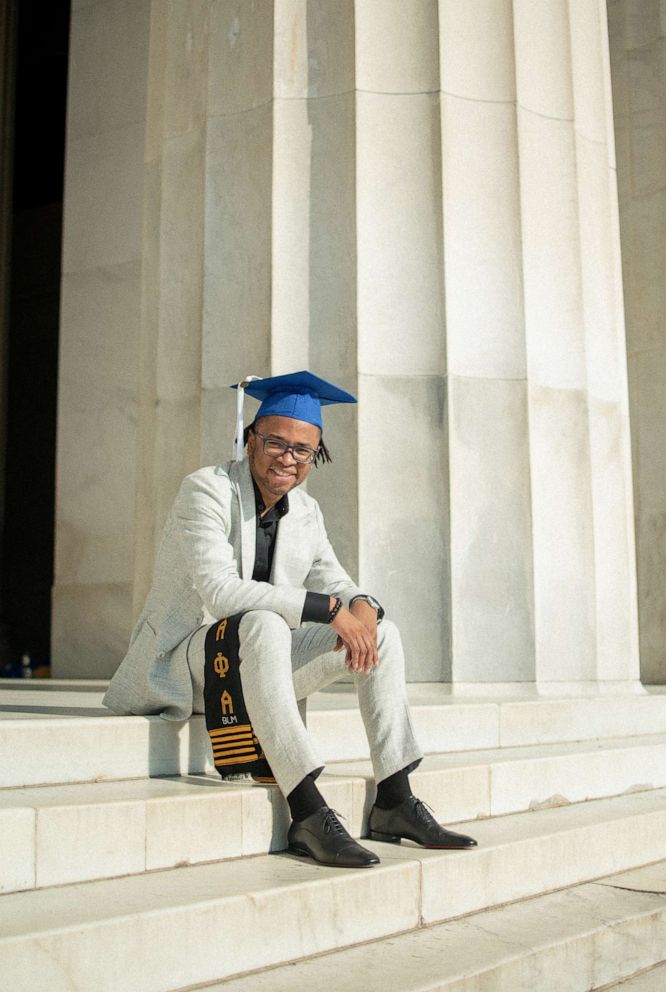
Similar to Andrade, American University's Tamir Harper graduated in May with a minor in education. In August, he will be heading home to teach in Philadelphia's city school district on an emergency certification while studying for his master's at the University of Pennsylvania. Harper is joining the sliver of teachers in America who are Black men -- just under 2%, according to the National Teacher and Principal Survey from 2017-2018 -- and he wants to be a role model who improves the education system for his adolescent nephews.
"It is ensuring that we rebuild, reimagine public education," Harper said, describing his commitment to teaching. "We should be able to say we have, specifically, Black male educators in every school building and every child experiences a Black male educator and understands it. We need more -- even more so in my 'hood in southwest Philly."
History of school violence
Harper is returning to his city amid high incidents of local gun violence and, like many other Americans, he was "outraged" by the mass school shooting in Uvalde. According to a Quinnipiac University poll released in June, 92% of Americans support requiring background checks for all gun buyers and 74% support raising the minimum legal age to buy any gun to 21 years old nationwide.
It irks Harper, he said, that the police didn't do enough to more quickly stop the 18-year-old gunman in Uvalde.
"When we look at Texas, specifically, we still are putting police officers first when we understand that they were cowards," Harper said about the law enforcement officials who waited more than an hour to intervene at Robb Elementary. (An investigation into their response is ongoing.) "Police officers with firearms stood outside … that sat there and stood idle."
In the wake of the shooting, Ohio Gov. Mike DeWine signed a bill which would authorize arming state teachers and staff on school grounds with just 24 hours of training. The state's education association doesn't support the legislation.
Harper isn't in favor of arming teachers either -- in Ohio or elsewhere. He wishes all forms of violence would stop.
He knows next year will be tough, but Philadelphia's native son aims to make a difference in his hometown. In order for this to happen, Harper said, public education leaders must "retrain the brain but also ensure that teachers have the resources."
"That's what reimagining [looks like]: discipline, curriculum, teaching, training -- all the way to how we design buildings," he said.
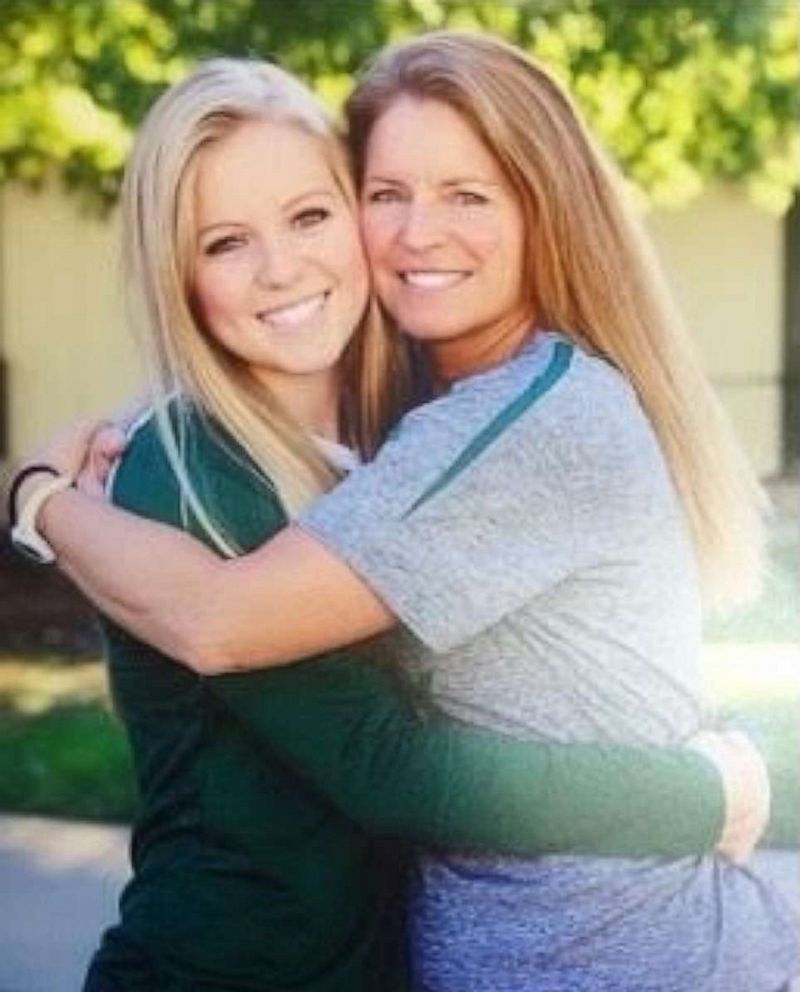
Courtney Kirkland is also stepping into the workforce at this critical time. The incoming teacher last year quit her federal government job and will be leading a freshman classroom at YES Prep White Oak Secondary in Houston in the fall. Through Teach for America, which recruits recent college graduates to low-income schools, Kirkland was in the middle of a virtual training session when the Uvalde shooting unfolded.
While she and other teachers are calling for anti-gun violence legislation, Kirkland believes that mass shootings have systemic roots.
"I think gun violence is like a symptom of our systems that are failing," she told ABC News. "We don't have institutions in the U.S. built to raise healthy, caring, empathetic people."
She said American culture is obsessed with guns. Putting guns into the hands of teachers is not solving the issue.
"It's just me adding more violence to the equation," Kirkland said. "I don't think that's the way forward … I also think teachers have an already impossible job. We already play social worker and teacher and educator and parent and this and that, and also asking us to operate guns is a lot. And I think that's a Band-Aid solution. We're not fixing the fact that we're raising violent people."
Gangone is a career educator. She feels some of the challenges that educators face are unlike those in other professions.
"We don't think about becoming an engineer and worrying about if someone was going to come into our office and kill us," Gangone said. "Teachers have to worry about whether or not they're going to be in the classroom and someone will come in to kill them and their students."
Originally from California, Kirkland has always been inspired by teachers like her mom, Jill, whom she upholds as her superhero. She is energized to follow in her mother's footsteps and not return to her 9-to-5. The classroom, Kirkland said, has been summoning her for a year.
"I knew that I think my soul would die a little bit more if I was doing corporate work," she said. "My next option was teaching. That's when my soul, kind of, lit up again and I felt hope and new energy and new purpose."
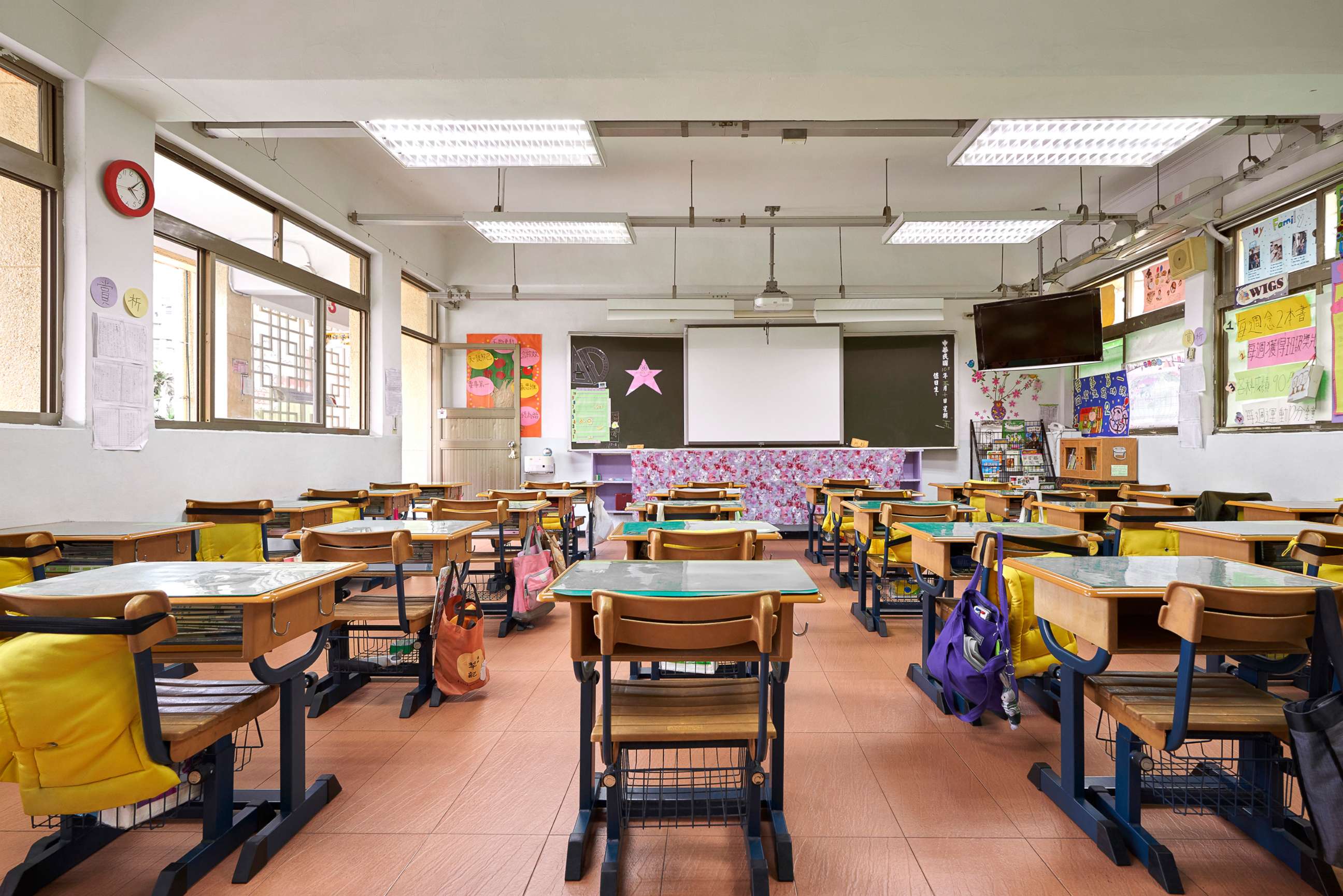
COVID in classrooms
Kirkland and Andrade and Harper are all excited for class. But they'll be working around the continued risk of a viral disease as well, which they haven't forgotten.
"I'm absolutely scared," Kirkland said. "I'd be lying if I said I'm not nervous and not a little bit anxious."
Harper described being "petrified." The Journal of American Medical Association said that the coronavirus has disproportionately affected Black and brown people during the pandemic because minorities are more likely to live in crowded environments, multigenerational households or don't have access to remote working capabilities.
Education Week cited more than 400 active K-12 teachers who had died from COVID-19. Nevertheless, Harper is still committed to his students.
"My goal is to make sure that the students that came into that building, when their families decided to send them into that building and when they decided to come to school that day, they need to leave that same day," he said.
Even though it isn't clear what's to come for Andrade, whose backup plan includes offering her skills as a substitute, she remains hopeful.
"I want my students to feel valued," she said. "Something I will take into my first year is how do I make sure that each student in my classroom feels valued?"




